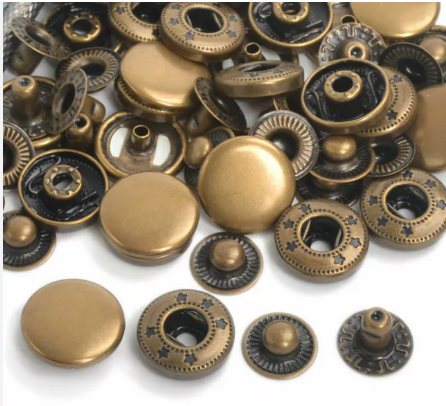How a tiny snap button reveals the full logic of user experience design, ergonomics, and physical interaction?
1. Popper Buttons: Everyday Objects, Overlooked Interactions
The popper button, also known as a snap fastener, is one of the most common mechanical closure systems used across a wide range of products — from apparel and bags to outdoor gear and medical equipment.
Despite its small size and simple mechanism, it plays a surprisingly important role in human-machine interaction, offering closure, security, tactile feedback, and habitual ease of use.

2. Structure = Interaction: How Popper Buttons Work
A typical popper button consists of two main components:
- Stud (male part): The protruding element that snaps into the socket
- Socket (female part): The part containing a spring mechanism that creates the snapping sound and hold
The typical user interaction follows this intuitive sequence:
Align → Press → Snap (audible click) → Lock
This clear and tactile interaction process ensures that even in low-visibility or high-speed scenarios, the user can operate the closure with ease and confidence.
3. Ergonomics in Design: Balancing Effort, Angle, and Accuracy
✅ Designing for Diverse Users
- Children & the elderly: Require lower actuation force for easy handling
- Outdoor users: Need higher resistance to accidental opening
- Single-hand or impaired users: Require smoother mechanics and larger contact areas
✅ Posture and Installation Angles
Popper buttons that are placed on inconvenient locations (e.g., back panels, bag bottoms) can compromise usability. The best designs match natural hand motion and require minimal wrist strain.
Great popper button design is about balancing comfort, safety, and intuitive control.
4. Popper Buttons as Physical UX: The Click Experience Beyond Screens
In digital design, we emphasize click feedback and interface intuitiveness. In physical products, the “snap” of a popper button serves the same function.
UX Principles in Popper Button Design:
- Auditory Feedback: A reassuring snap indicates task completion
- Tactile Confirmation: Clear touch response prevents misuse
- Visual Cues: Good layout and button visibility guide interaction naturally
Real-World Examples:
- Babywear: Soft plastic snaps that are gentle, safe, and secure
- Military/Utility gear: Oversized metal snaps for quick access under pressure
- Luxury bags: Precision-engineered snaps that convey tactile luxury
Popper buttons are a subtle but critical part of physical micro-interactions.
5. Innovation Beyond Closure: Smart and Sustainable Snap Fasteners
As technology evolves, so do traditional components. Popper buttons are now being reimagined through:
- Magnetic-assisted snaps: Self-aligning and easier to operate
- Smart buttons: Embedded with NFC or Bluetooth chips
- Eco-materials: Made from biodegradable plastics or recyclable metals
- Modular systems: Designed for easy disassembly, repair, or upgrade
These innovations turn popper buttons from basic hardware into smart components, brand features, and sustainable solutions.
6. Conclusion: More Than a Closure—A Silent Dialogue
Popper buttons don’t just close things — they communicate. A well-designed snap fastener provides effortless interaction, instant feedback, and user confidence — all without a manual.
In industrial design, the best user experiences often hide in the smallest, quietest details.

